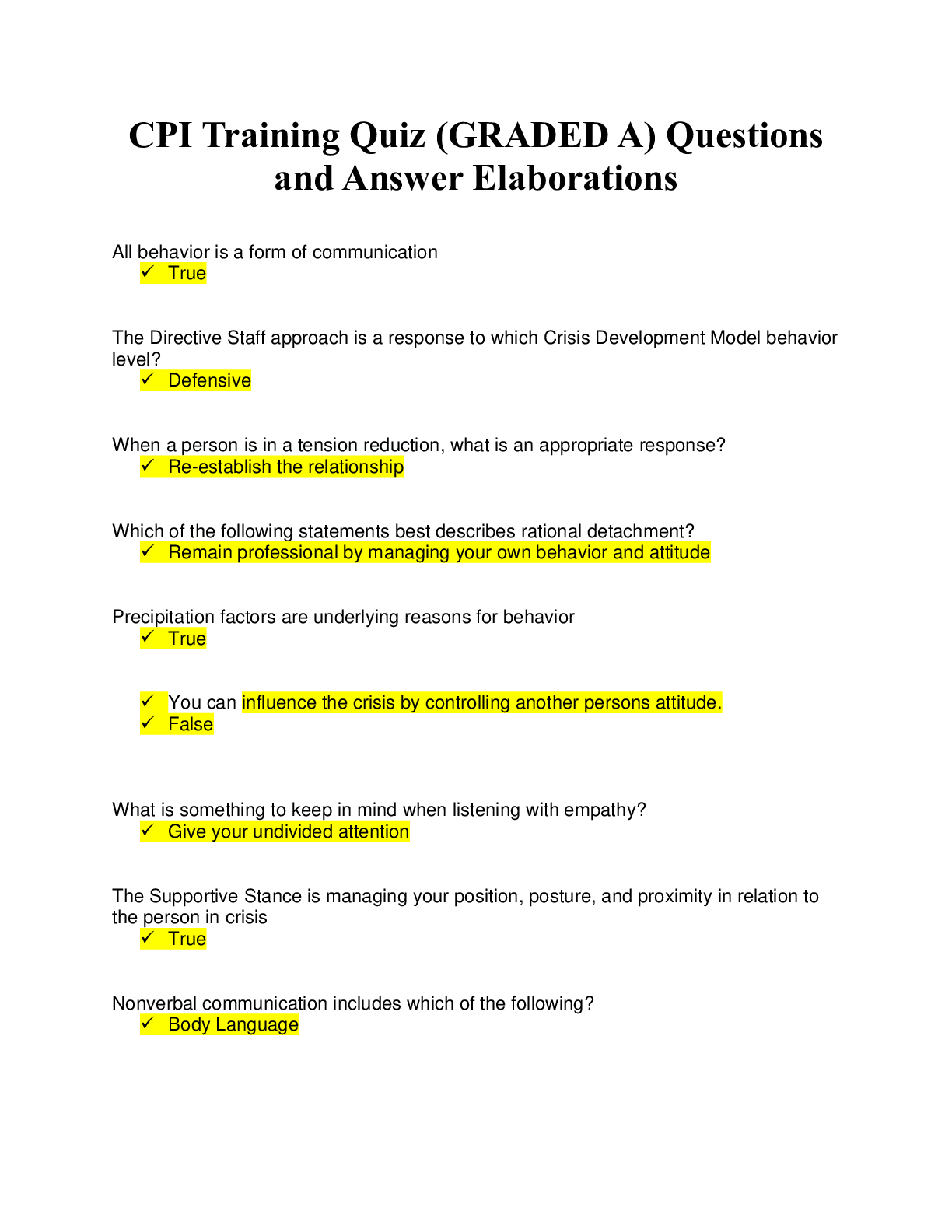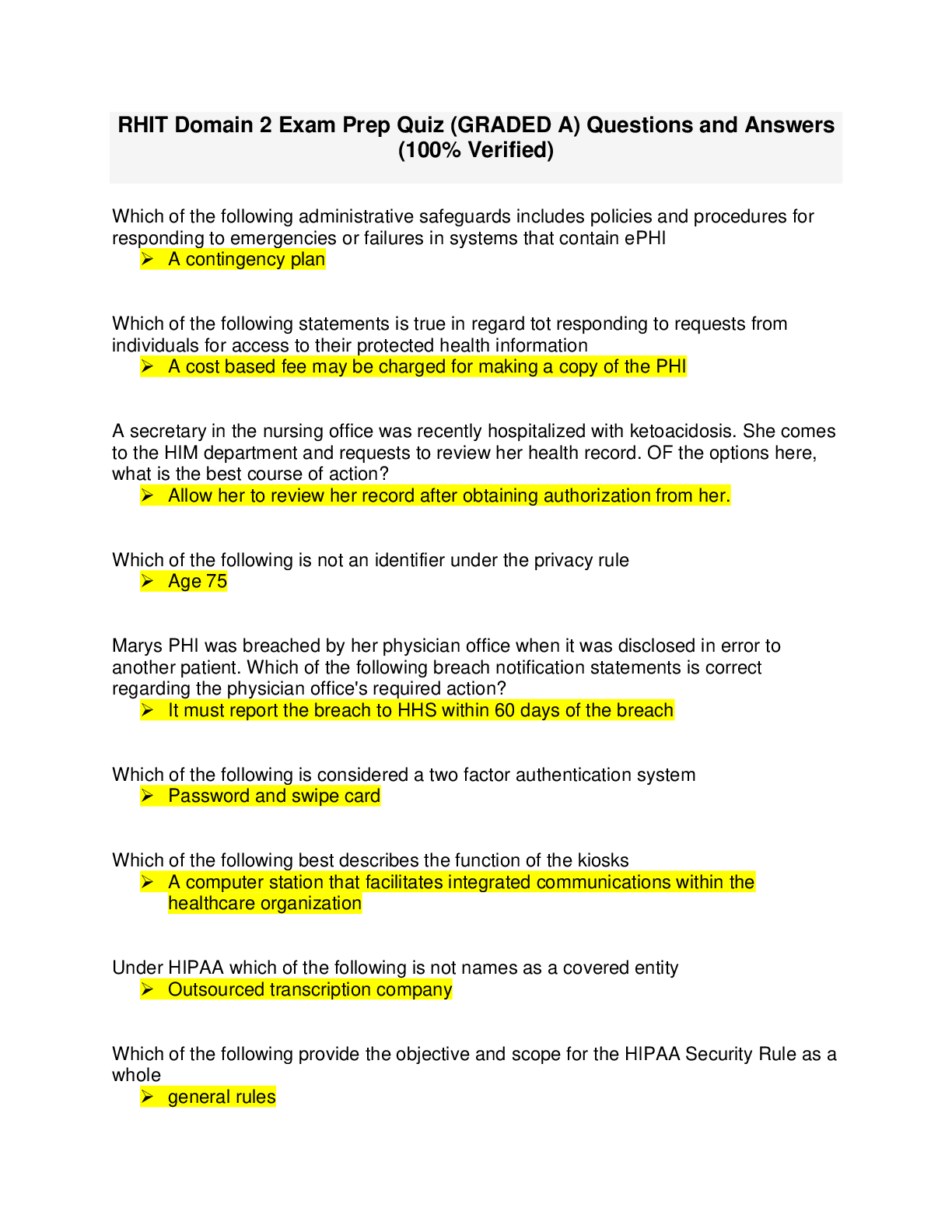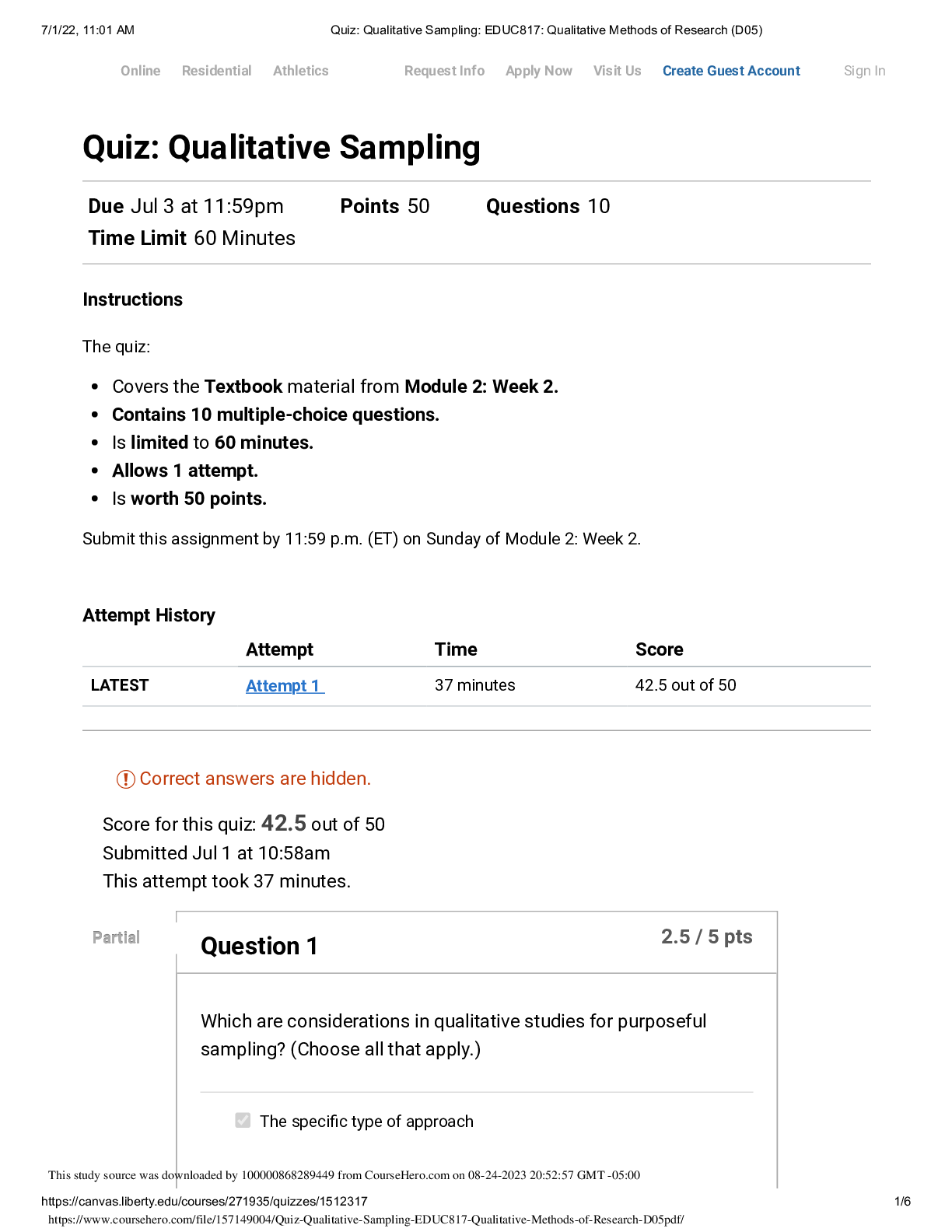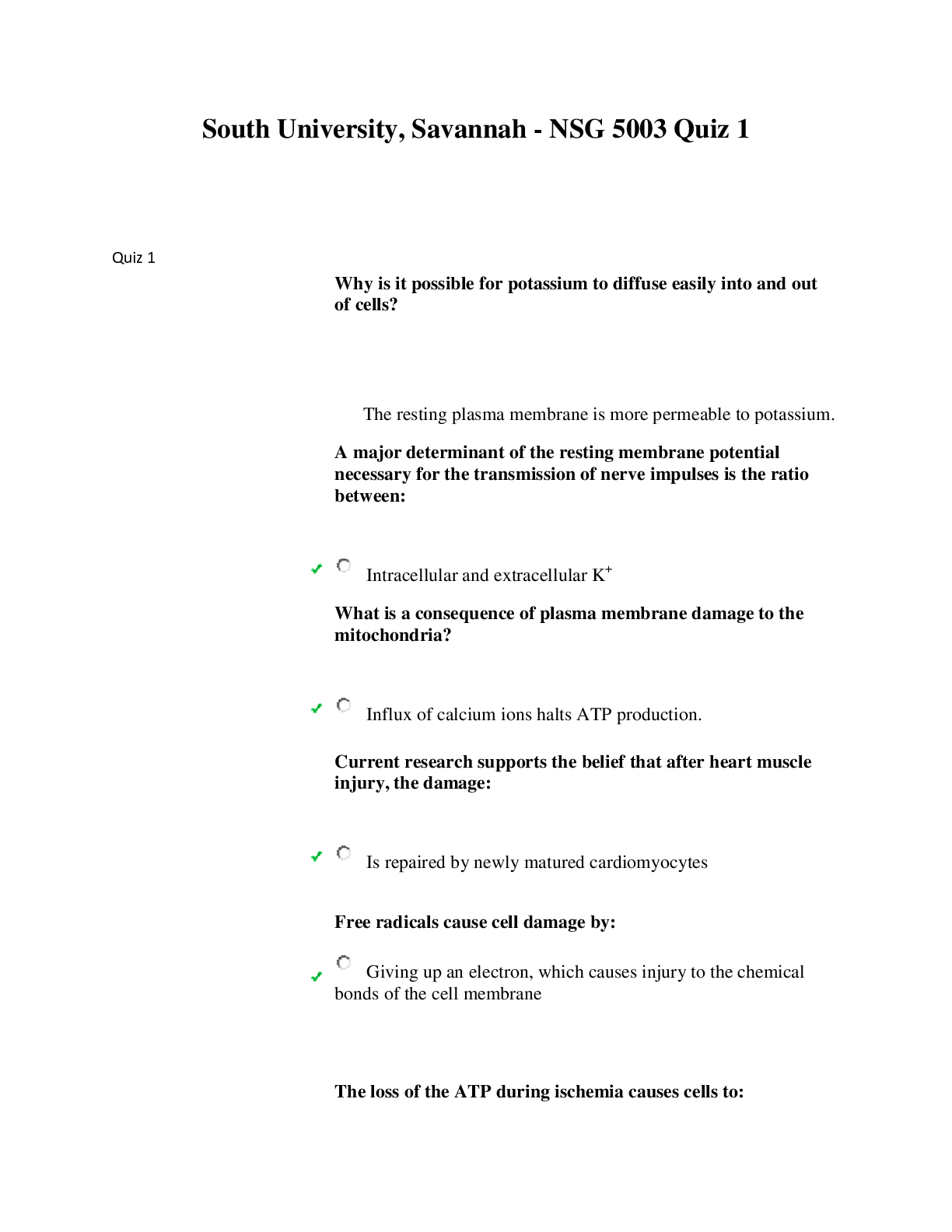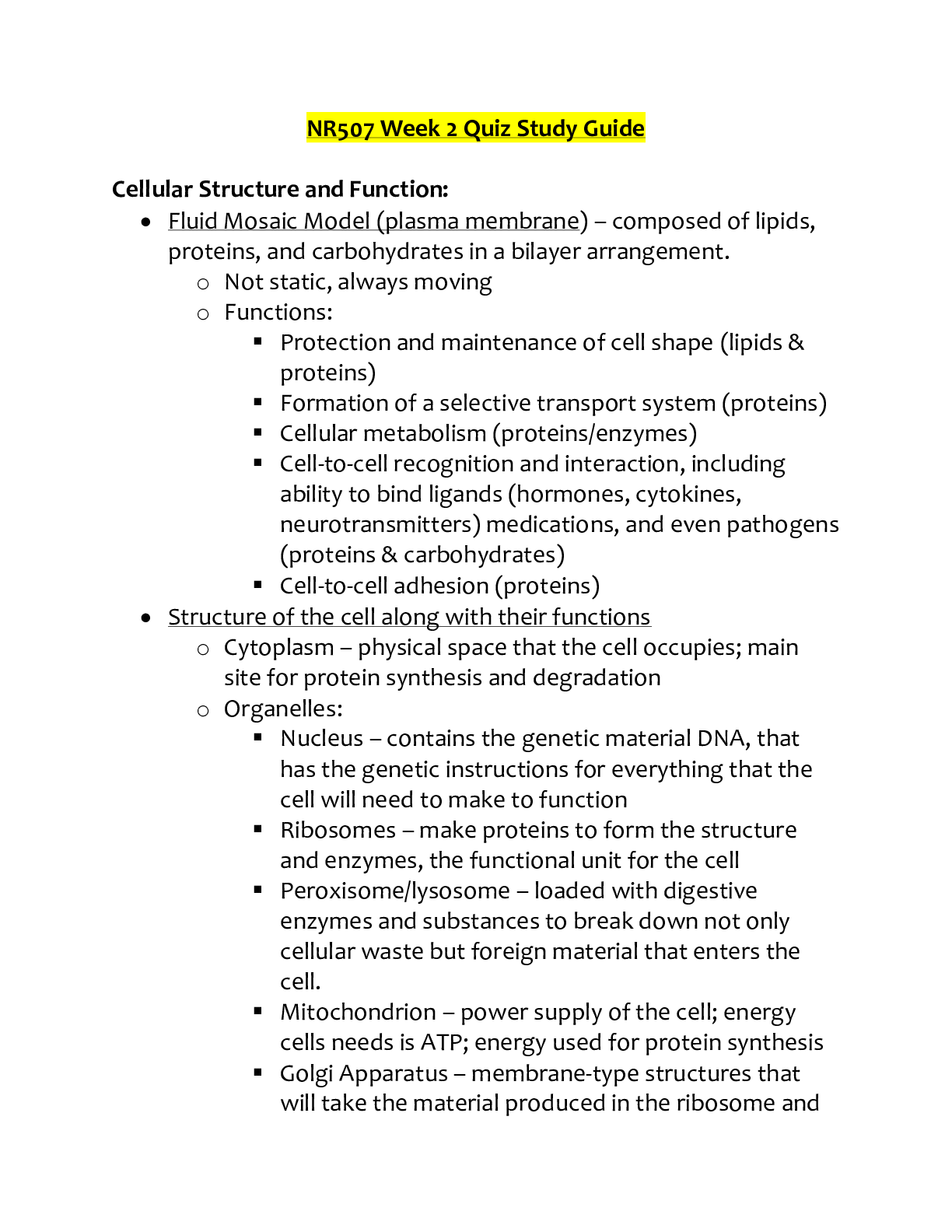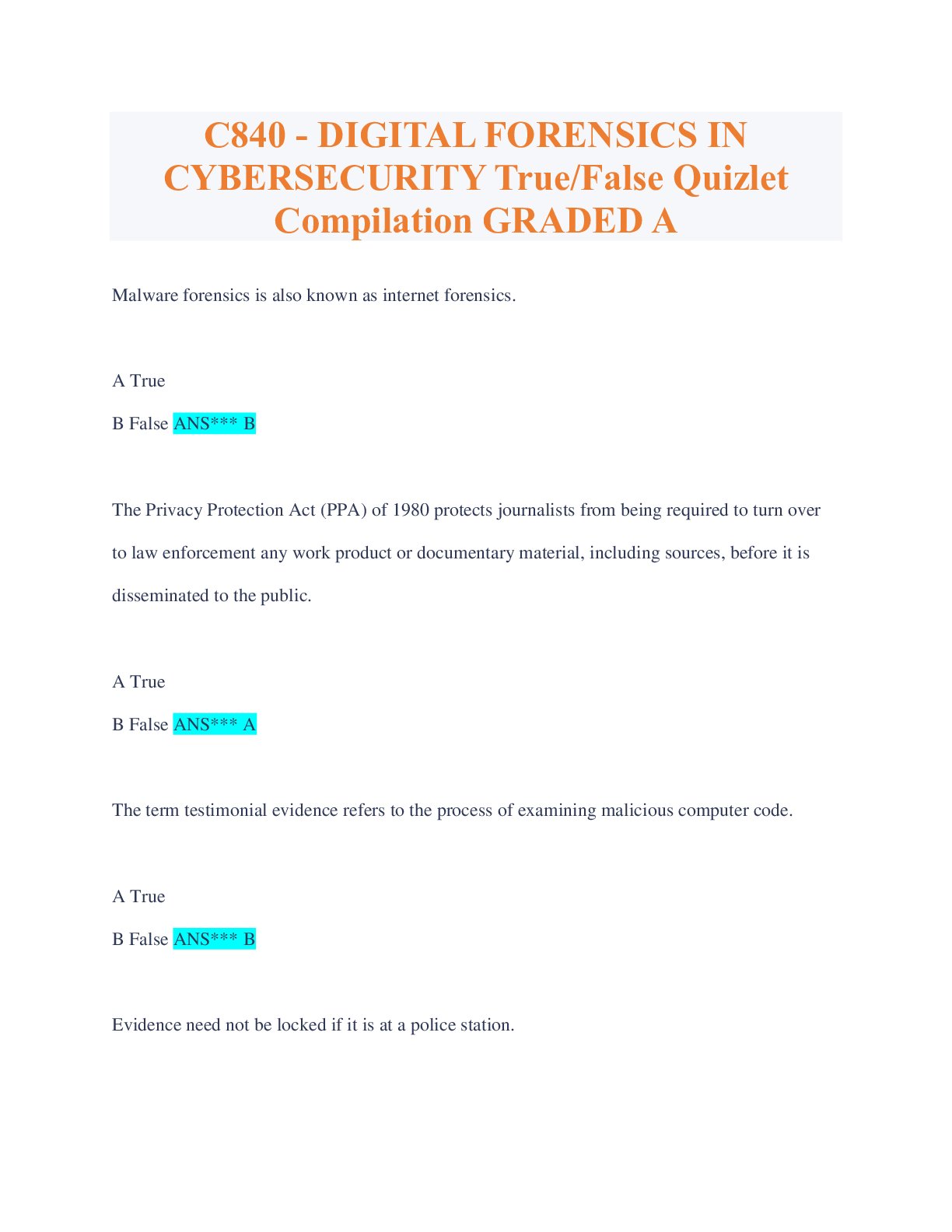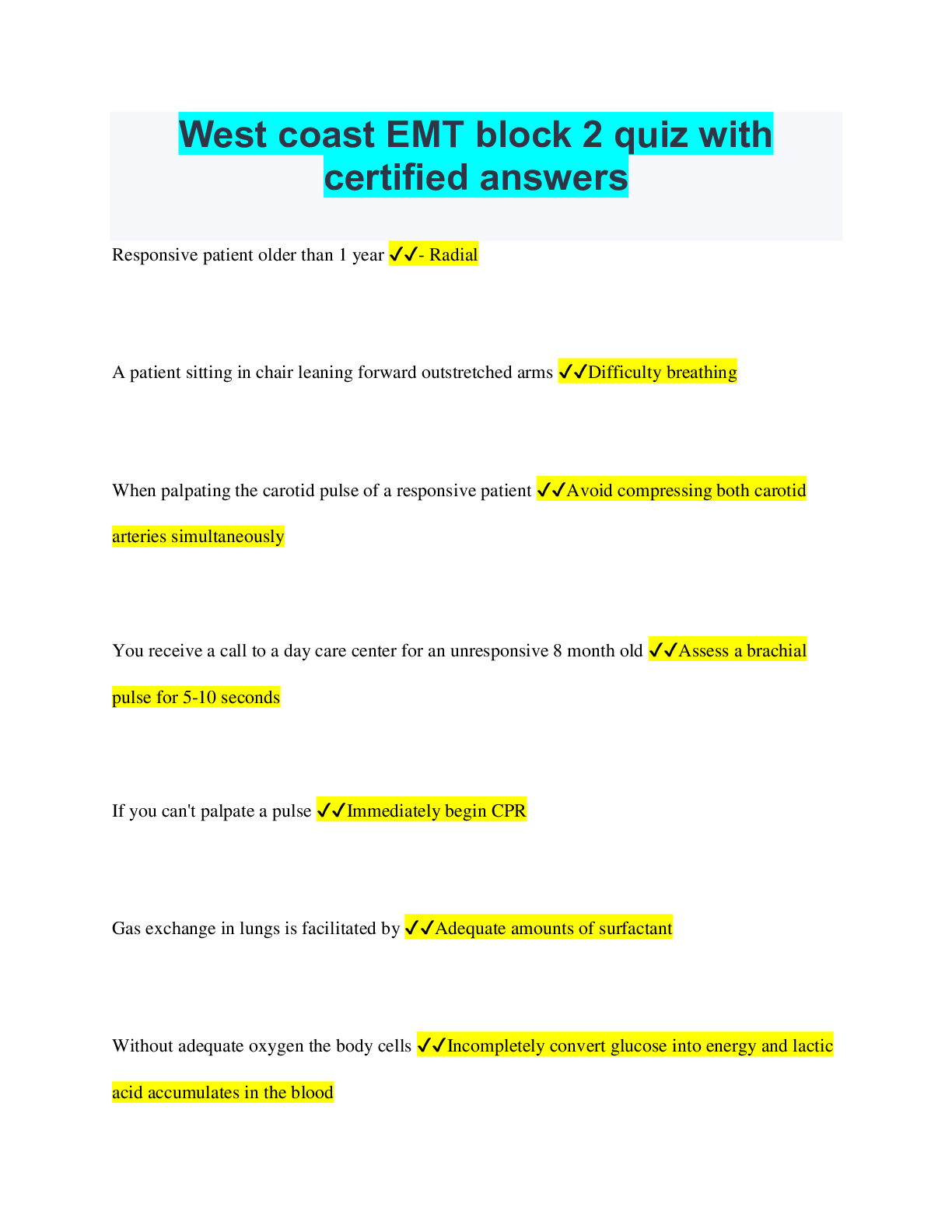Anatomy > Quiz > SCIN 132 quiz 2 (GRADED A) Questions and Answers | American Military University (All)
SCIN 132 quiz 2 (GRADED A) Questions and Answers | American Military University
Document Content and Description Below
SCIN 132 quiz 2 Question 1 of 32 0.0 / 3.0 Points Which of the following statements is/are true? • A. The head is inferior to the chest. • B. The feet are superior to t... he knees • C. The upper extremities are lateral to the abdomen. • D. The hands are distal to the elbows. • E. Both C and D are correct. Feedback:The head is superior to the chest. The feet are inferior to the knees. Question 2 of 32 3.0 / 3.0 Points Organization, metabolism, responsiveness, movement, development, growth and reproduction all together are called of a human body. • A. anabolism • B. structures • C. catabolism • D. functions • E. anatomy Feedback:Good work; your answer is correct! Question 3 of 32 3.0 / 3.0 Points The ability of an organism to adjust to changes in either its internal or external environments is called . • A. movement • B. growth • C. homeostasis • D. development • E. responsiveness Feedback:Good work; your answer is correct! Question 4 of 32 3.0 / 3.0 Points Which of the following statements is/are true? • A. The heart is located in the thoracic cavity. • B. The lungs are located in the abdominal cavity. • C. The brain is located in the cranial cavity. • D. The intestines are located in the abdominal cavity. • E. A, C, and D are all correct and true. Feedback:Good work; your answer is correct! Question 5 of 32 0.0 / 3.0 Points A collection of similar tissues that performs a specific function is an . • A. organelle • B. organ system • C. organ • D. organism • E. specific tissue Feedback:By definition, an organ is a collection of similar tissues that perform a specific function in the body. Question 6 of 32 3.0 / 3.0 Points Which of the following statement(s) is(are) correct? • A. Anabolism is a process in which complex structures or molecules are broken down into much simpler ones. • B. Catabolism is a process in which simple molecules can be combined to form more complex molecules or tissues. • C. Metabolism is the sum of all anabolic and catabolic reactions that take place in the body. • D. A waste product of all the reactions that take place in a cell is the molecule ATP. • E. All of the above statements are correct. Feedback:Good work; your answer is correct! Part 2 of 7 - 15.0/ 18.0 Points Question 7 of 32 3.0 / 3.0 Points A cell is an unspecialized cell that can divide without limit as needed and can, under specific conditions, differentiate into specialized cells. • A. Haploid cell • B. Somatic cell • C. Sex cell • D. Diploid cell • E. Stem cell Feedback:Good work; your answer is correct! Question 8 of 32 0.0 / 3.0 Points Transcription and translation take place in the and , respectively. • A. nucleus; cytoplasm • B. ribosome; cytoplasm • C. cytoplasm; nucleus • D. nucleolus; cytoplasm • E. nucleolus; nucleus Feedback:Transcription takes place in the nucleus while translation takes place in the cytoplasm. Question 9 of 32 3.0 / 3.0 Points Which of the following is NOT a difference between DNA and RNA? • A. DNA contains thymine whereas RNA contains uracil • B. DNA contains alternating sugar-phosphate molecules whereas RNA does not contain sugars • C. They have completely different functions. • D. RNA is single stranded and DNA is double stranded • E. DNA contains deoxyribose and RNA contains ribose Feedback:Good work; your answer is correct! Question 10 of 32 3.0 / 3.0 Points The stage of the cell cycle during which two new and fully functional nuclei are formed is called . • A. G2 • B. S • C. G3 • D. M • E. G1 Feedback:Good work; your answer is correct! Question 11 of 32 3.0 / 3.0 Points Which type of stem cell gives rise to red and white blood cells? • A. mesenchymal • B. blood • C. epithelial • D. endothelial • E. hematopoietic Feedback:Good work; your answer is correct! Question 12 of 32 3.0 / 3.0 Points The process when the cytoplasm actually divides into two separate cells is named . • A. Prophase • B. Mitosis • C. Meiosis • D. Cytokinesis • E. Interphase Feedback:Good work; your answer is correct! Part 3 of 7 - 15.0/ 15.0 Points Question 13 of 32 3.0 / 3.0 Points muscle is not voluntary and is responsible for the involuntary movements of internal organs such as the esophagus. • A. Smooth • B. Cardiac • C. Columnar • D. Skeletal • E. Stratified Feedback:Good work; your answer is correct! Question 14 of 32 3.0 / 3.0 Points The cells responsible for the transmission of the nerve impulse are . • A. transmission cells • B. microglia • C. astrocytes • D. neurons • E. oligodendrocytes Feedback:Good work; your answer is correct! Question 15 of 32 3.0 / 3.0 Points The standard and initial response of the body to injury is called . • A. fever • B. cell atrophy • C. apoptosis • D. inflammation • E. necrosis Feedback:Good work; your answer is correct! Question 16 of 32 3.0 / 3.0 Points muscle is also called voluntary muscle. • A. Smooth • B. Columnar • C. Stratified • D. Skeletal • E. Cardiac Feedback:Good work; your answer is correct! Question 17 of 32 3.0 / 3.0 Points Simple epithelium appears under a microscope like scales. They usually lie flat and horizontal. • A. squamous • B. cuboidal • C. stratified • D. columnar • E. junctional Feedback:Good work; your answer is correct! Part 4 of 7 - 9.0/ 15.0 Points Question 18 of 32 3.0 / 3.0 Points Which of the following cells are primarily responsible for producing the pigment that gives color to the skin? • A. Melanocytes • B. Langerhans cells • C. Basal cells • D. Keratinocytes • E. Merkel cells Feedback:Good work; your answer is correct! Question 19 of 32 0.0 / 3.0 Points Which of the following is NOT part of the epidermis? • A. Stratum basale • B. Papillary layer • C. Reticular layer • D. Two of the Above are NOT part of the epidermis • E. All of the above are part of the epidermis Feedback:The dermis consists of the papillary and reticular layers while the epidermis consists of the stratum basale, spinosum, granulosum and corneum. Question 20 of 32 0.0 / 3.0 Points Which of the following layers contain blood vessels? • A. Stratum corneum • B. Stratum basale • C. Stratum granulosum • D. Papillary dermis • E. None of the above Feedback:The papillary layer of the dermis is vascular whereas the layers of the epidermis are all avascular. Question 21 of 32 3.0 / 3.0 Points Because the skin sloughs off on a regular basis, the most superficial layer of the epidermis is primarily composed of what type of tissue? • A. Simple squamous epithelium • B. Cuboidal epithelium • C. Pseudostratified epithelium • D. Stratified squamous epithelium • E. Simple Columnar epithelium Feedback:Good work; your answer is correct! Question 22 of 32 3.0 / 3.0 Points Which of the following glands are closely associated with thermoregulation? • A. Eccrine sweat gland • B. Apocrine sweat gland • C. Sebaceous gland • D. Two of the above • E. None of the above Feedback:Good work; your answer is correct! Part 5 of 7 - 21.0/ 21.0 Points Question 23 of 32 3.0 / 3.0 Points Respiratory acidosis can be a result of . • A. a panic attack • B. hyperventilation • C. travel to high altitudes • D. asthma Feedback:Correct! Question 24 of 32 3.0 / 3.0 Points Which of the following is true about "rebreathing"? • A. PCO2 will typically decrease. • B. pH typically will decrease. • C. Anxiety is respiratory problem that can mimic the effects of rebreathing. • D. it will cause the body to go into a state of alkalosis. Feedback:Correct! Question 25 of 32 3.0 / 3.0 Points Which of the following is NOT one of the body’s physiological chemical buffering systems? • A. hydrochloride • B. bicarbonate • C. phosphate • D. protein Feedback:Correct! Question 26 of 32 3.0 / 3.0 Points Respiratory acidosis is a result of . • A. a decrease in H+ in the blood • B. an increase in the H+ in the blood • C. an increase in blood pH • D. a decrease in H+ in the blood and an increase in blood pH Feedback:Correct! Question 27 of 32 3.0 / 3.0 Points Hypoventilation results in • A. spasms of the hands and feet. • B. numbness around the lips. • C. lightheadedness. • D. an accumulation of CO2 in the blood. Feedback:Correct! Question 28 of 32 3.0 / 3.0 Points Hyperventilation can result in . • A. too much oxygen in the blood • B. too little carbon dioxide in the blood • C. respiratory acidosis • D. too much carbon dioxide in the blood Feedback:Correct! Question 29 of 32 3.0 / 3.0 Points Acidosis is characterized by a blood pH . • A. less than 7.45 • B. greater than 7.45 • C. greater than 7.00 • D. less than 7.35 Feedback:Correct! Part 6 of 7 - 0.0/ 8.0 Points Answer the following question in your own words without using any resources. Your answer should be written in complete sentences using correct grammar, spelling, and terminology. Question 30 of 32 0.0/ 4.0 Points Briefly explain what happens to the pH and carbon dioxide levels in the blood during hyperventilation. Feedback:Learning Objective: Describe the effects of hyperventilation and hypoventilation on blood PCO2 and pH. Please review Lab Exercise 10, Activity 1. Comment:CO2 down, pH up Question 31 of 32 0.0/ 4.0 Points Briefly explain how the renal system regulates acid-base balance. Feedback:Learning Objective: Describe the chemical, renal system, and respiratory system buffer systems and place them in order from fastest to slowest. Please review Lab Exercise 10, Activity 2. Comment:Hint: compare with respiratory syst. [Show More]
Last updated: 1 year ago
Preview 1 out of 26 pages

Reviews( 0 )
Document information
Connected school, study & course
About the document
Uploaded On
Jul 23, 2022
Number of pages
26
Written in
Additional information
This document has been written for:
Uploaded
Jul 23, 2022
Downloads
0
Views
79

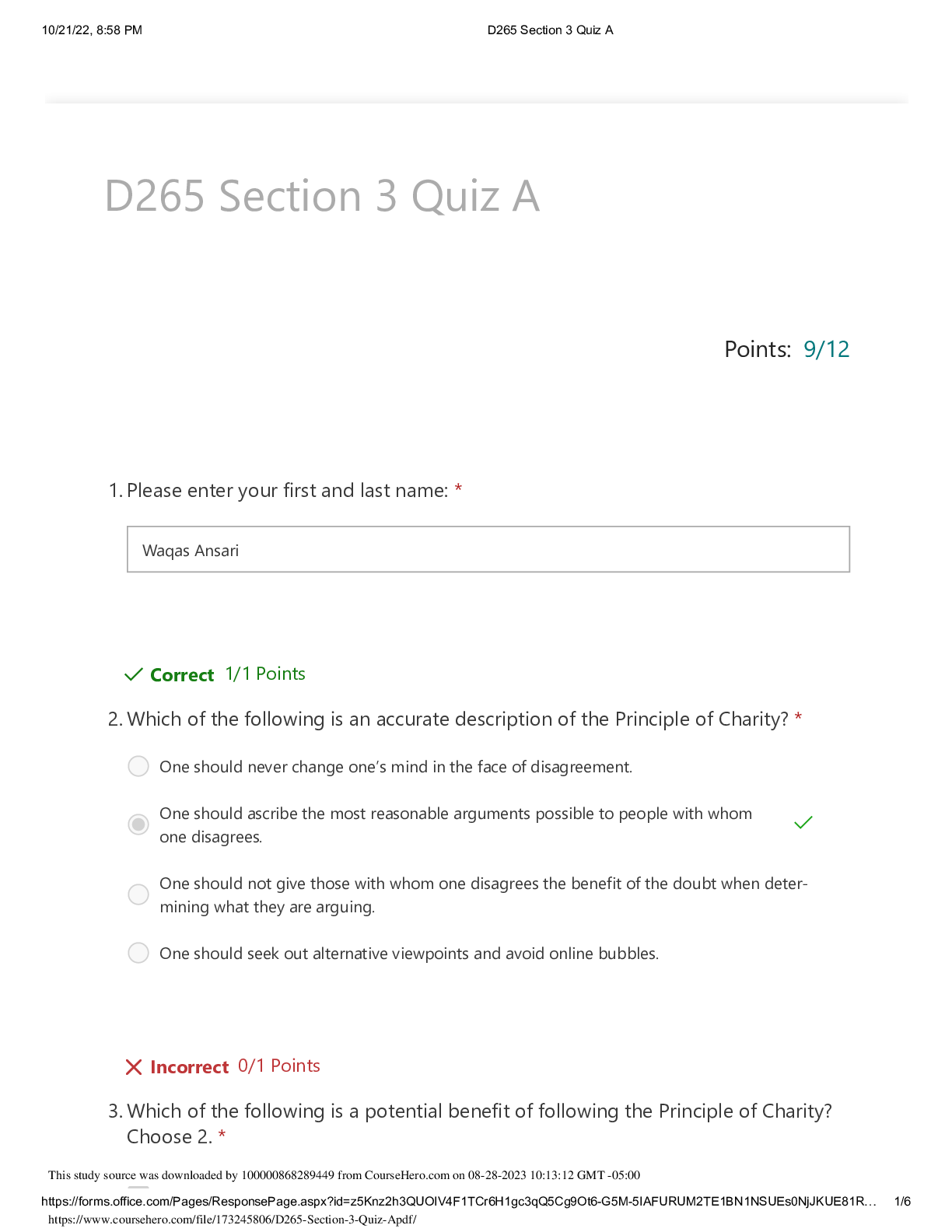
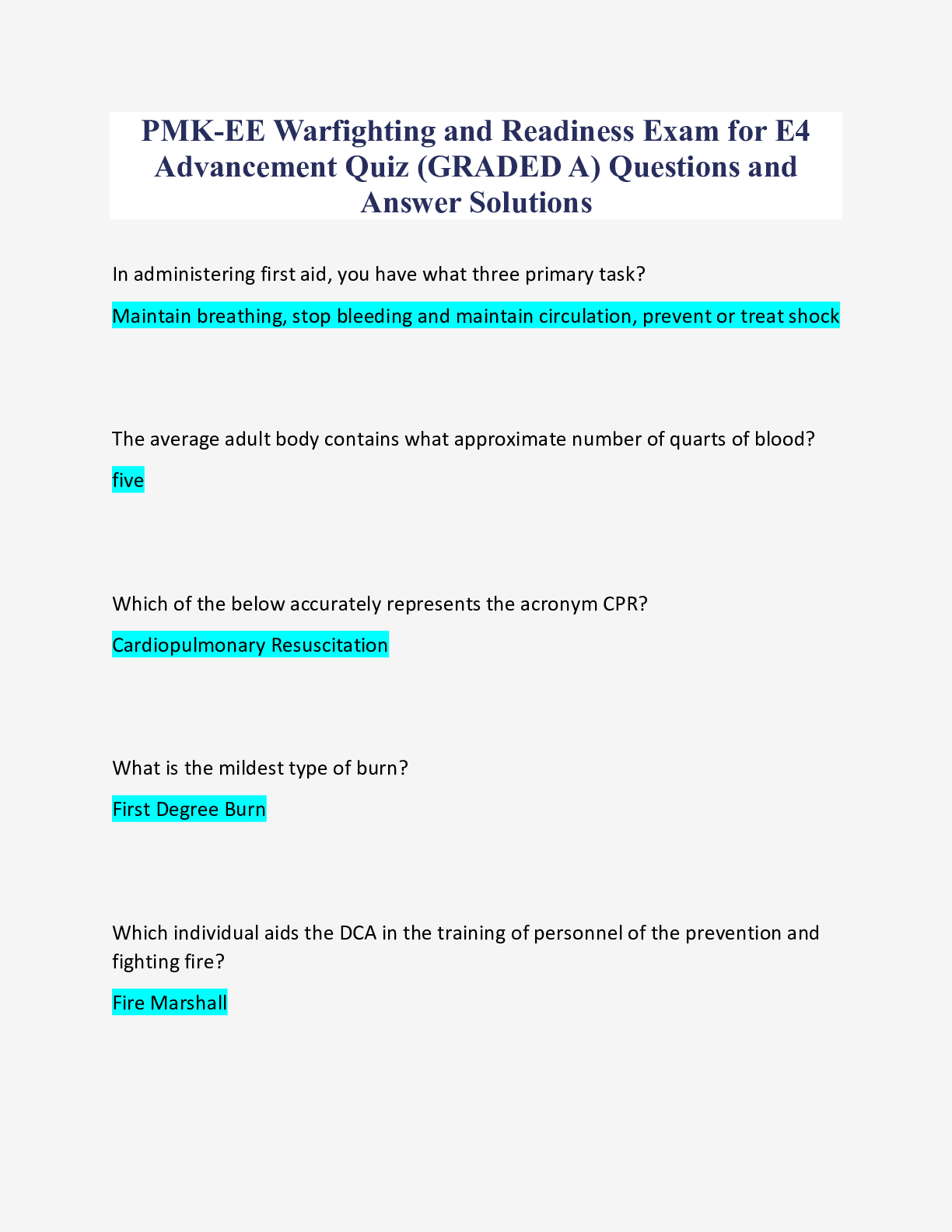

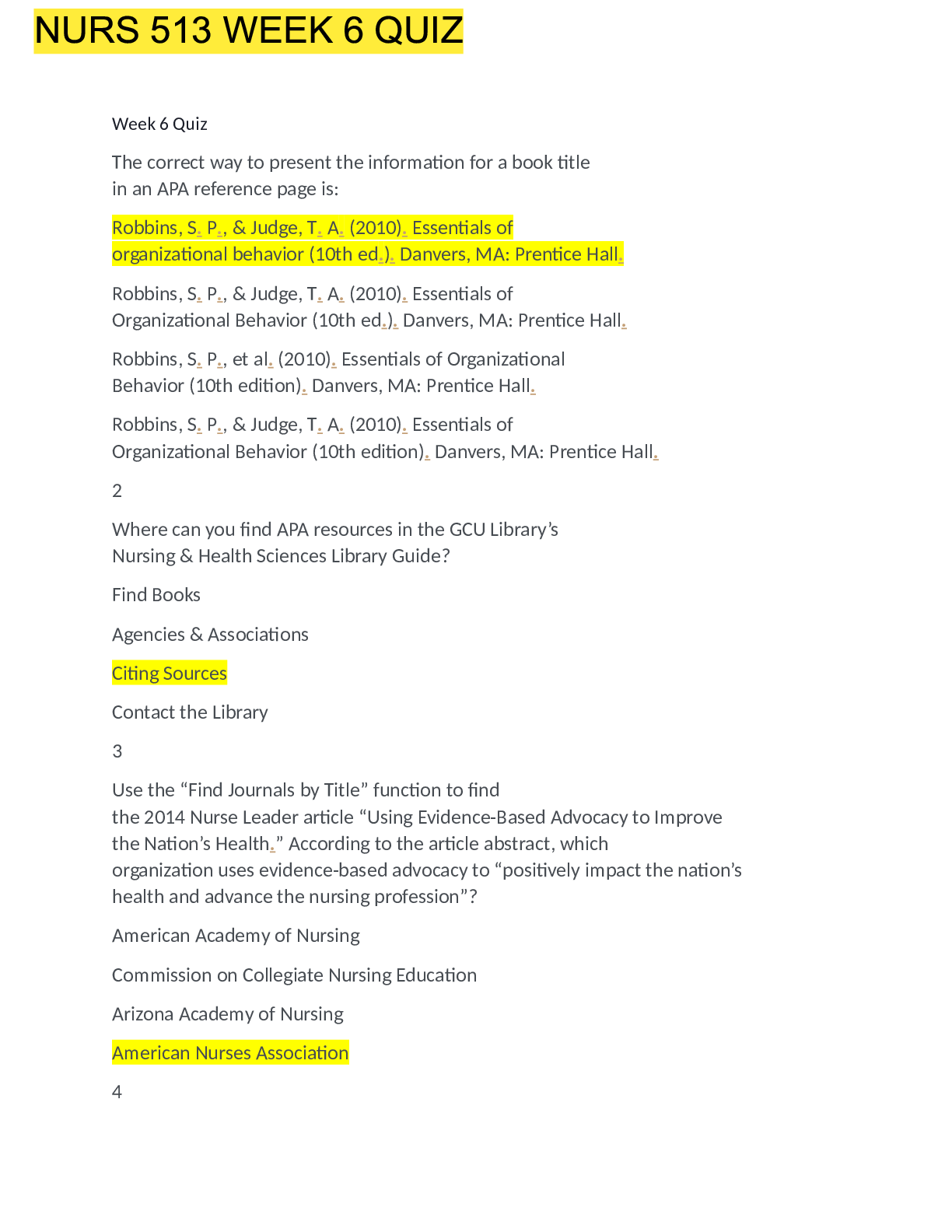


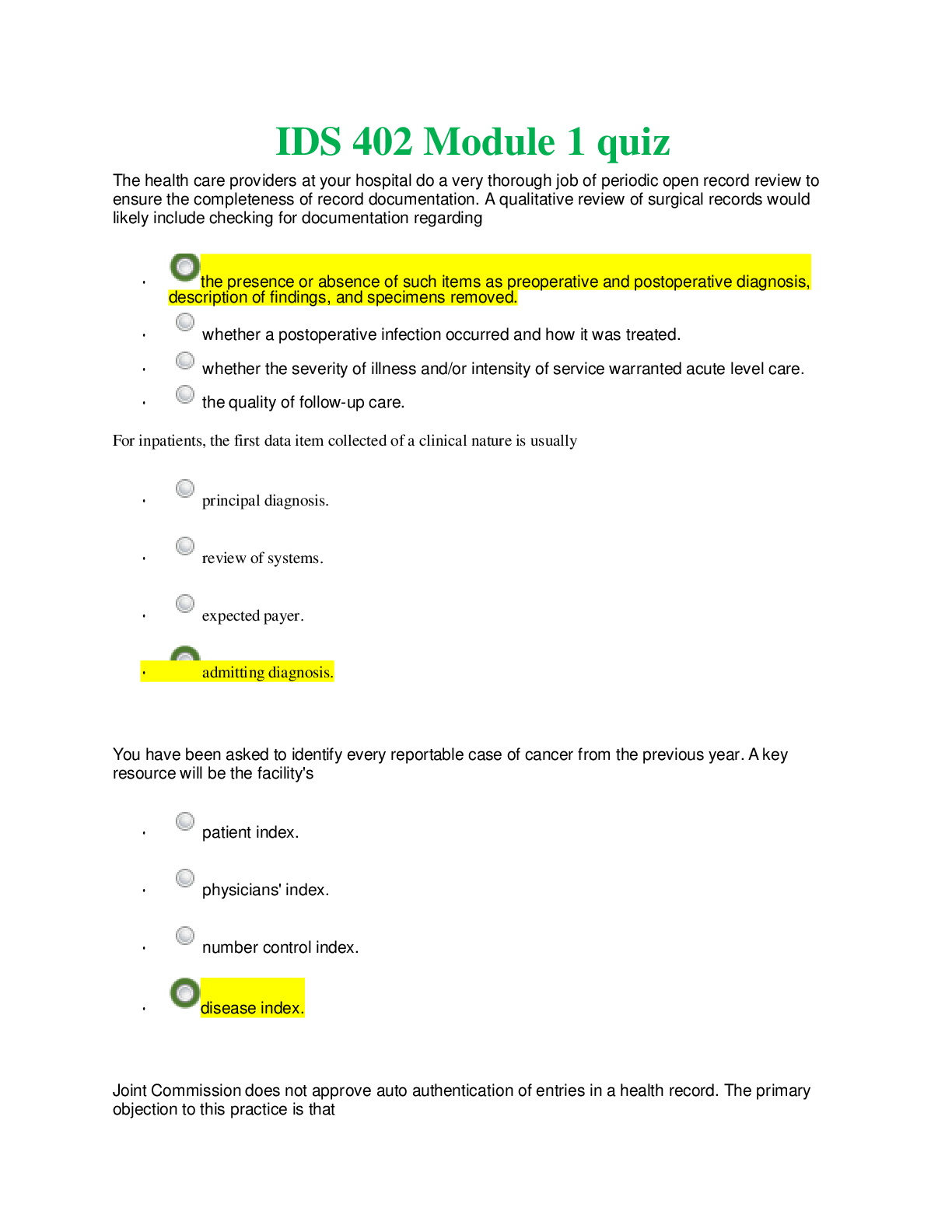

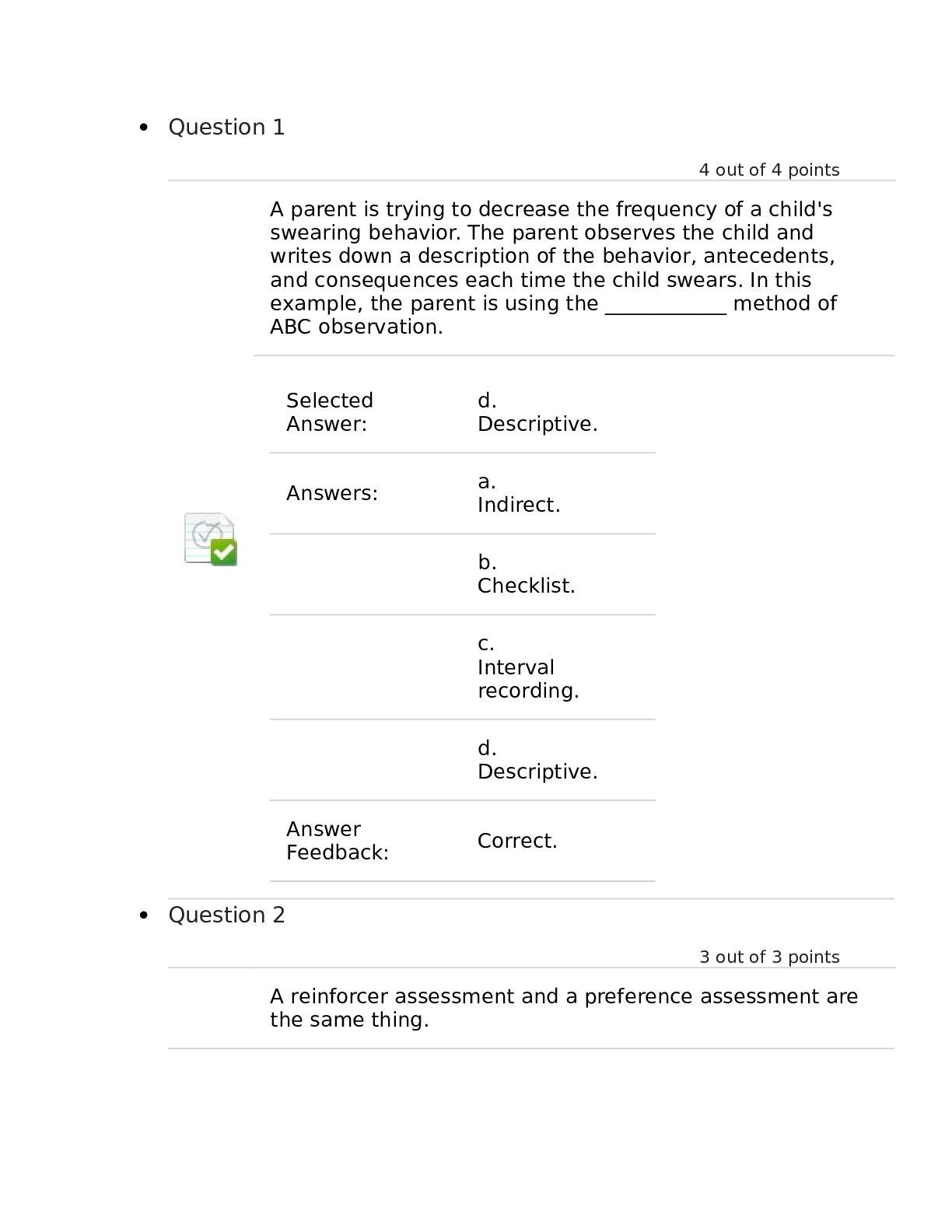
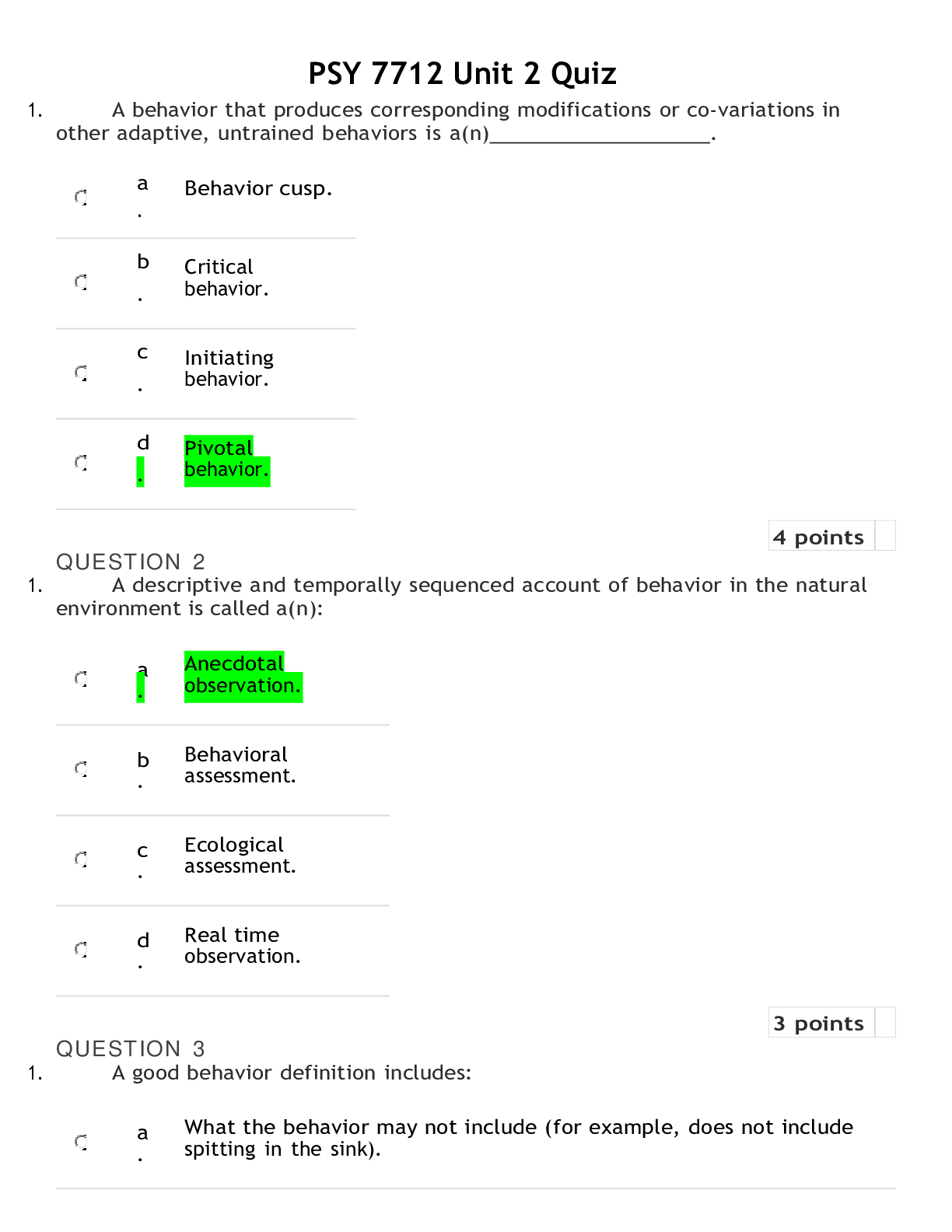


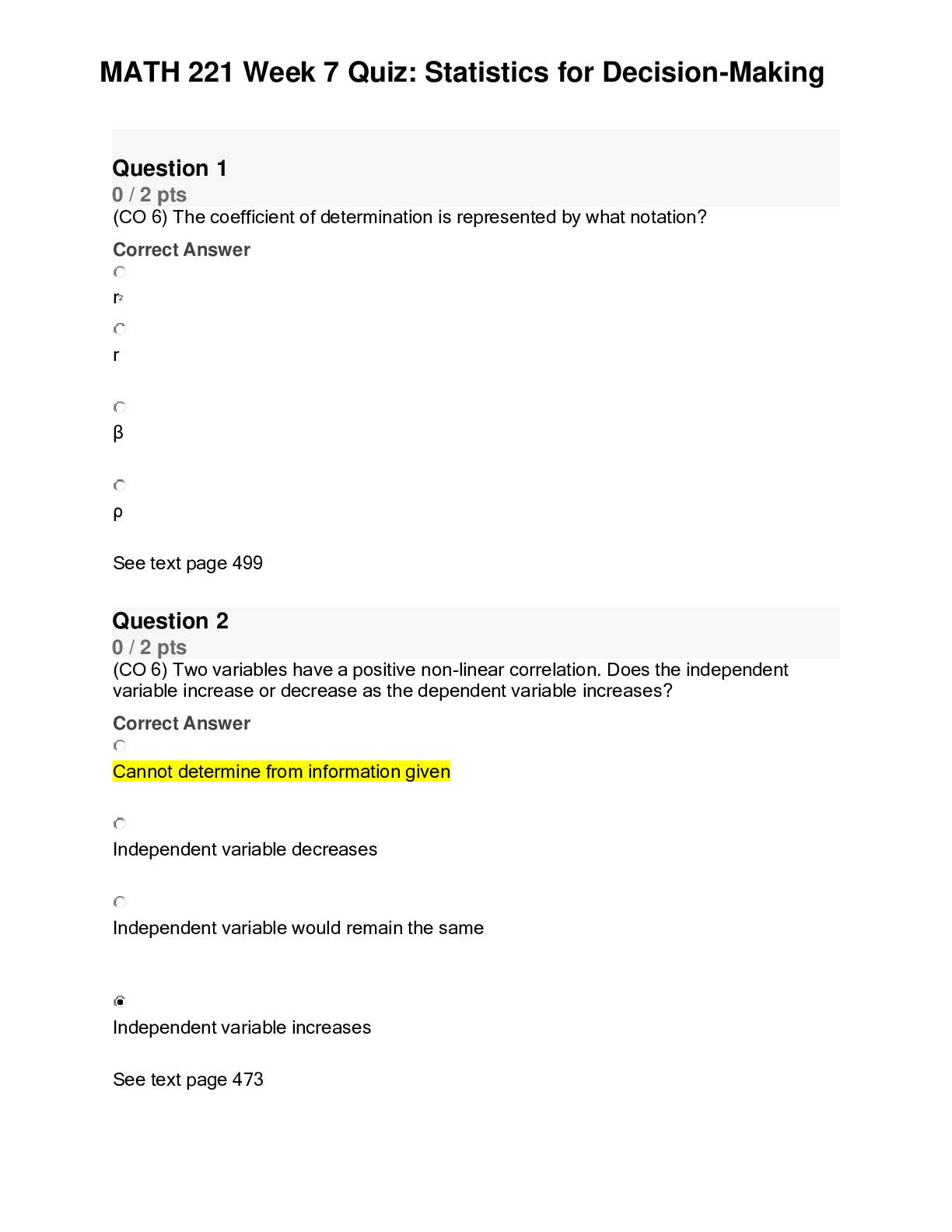
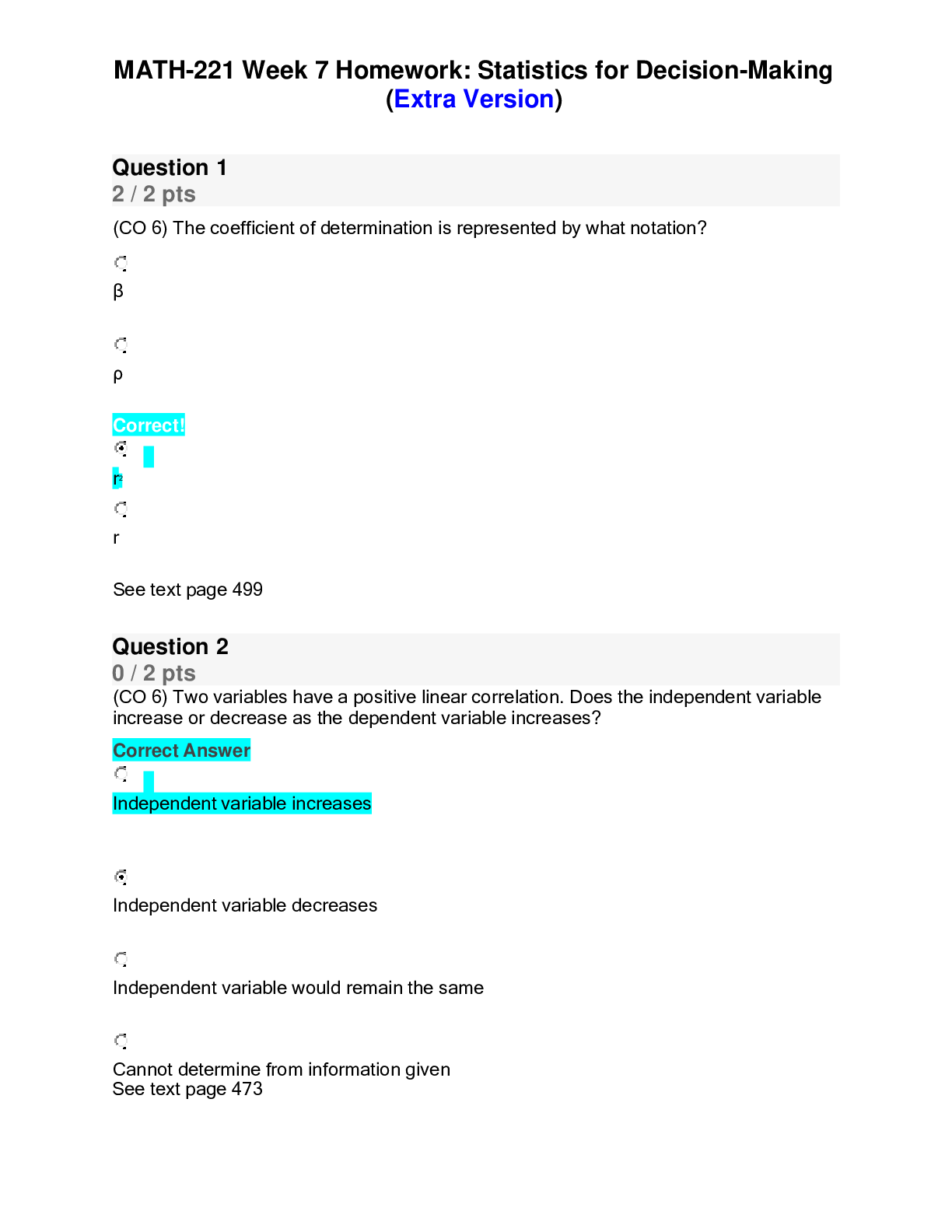


 (1).png)
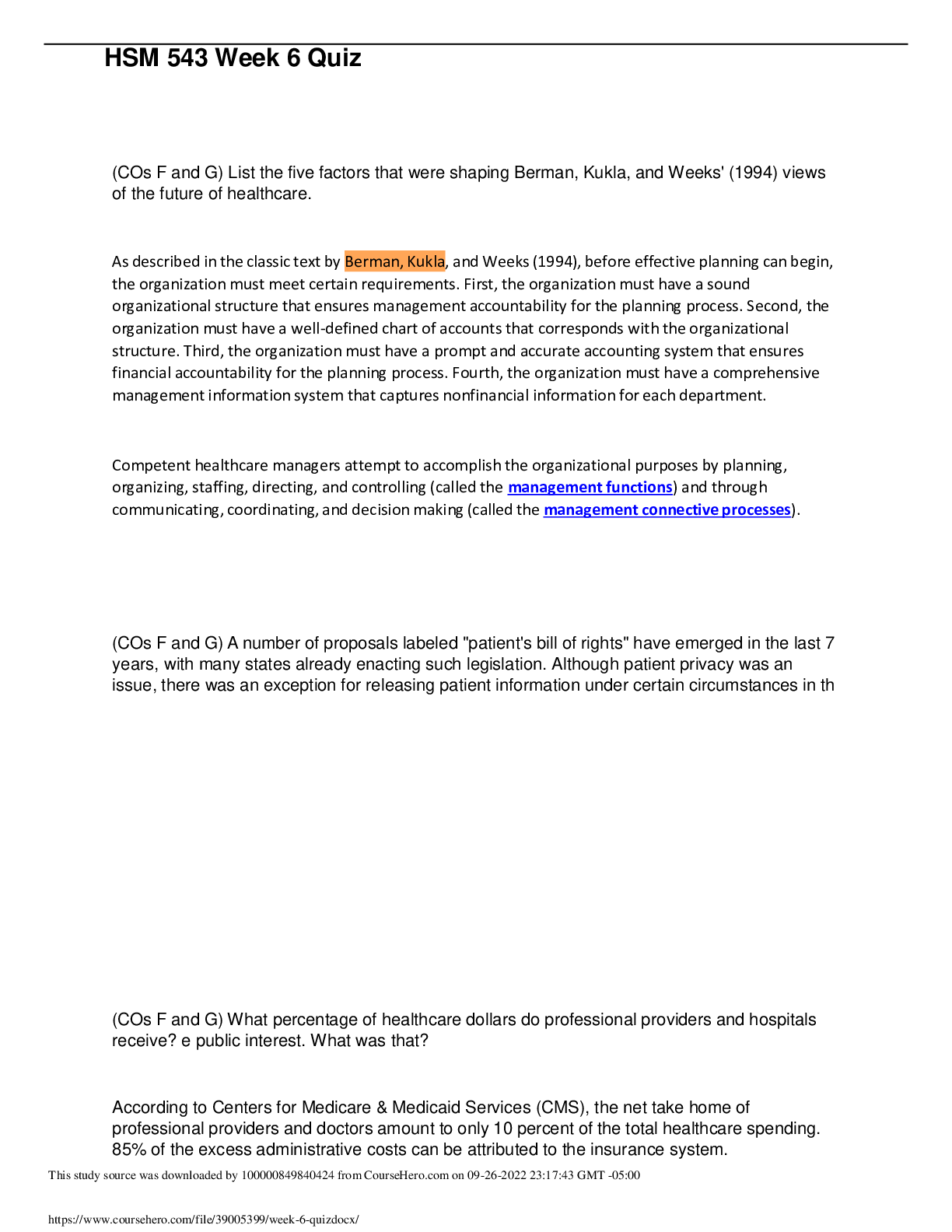
.png)

